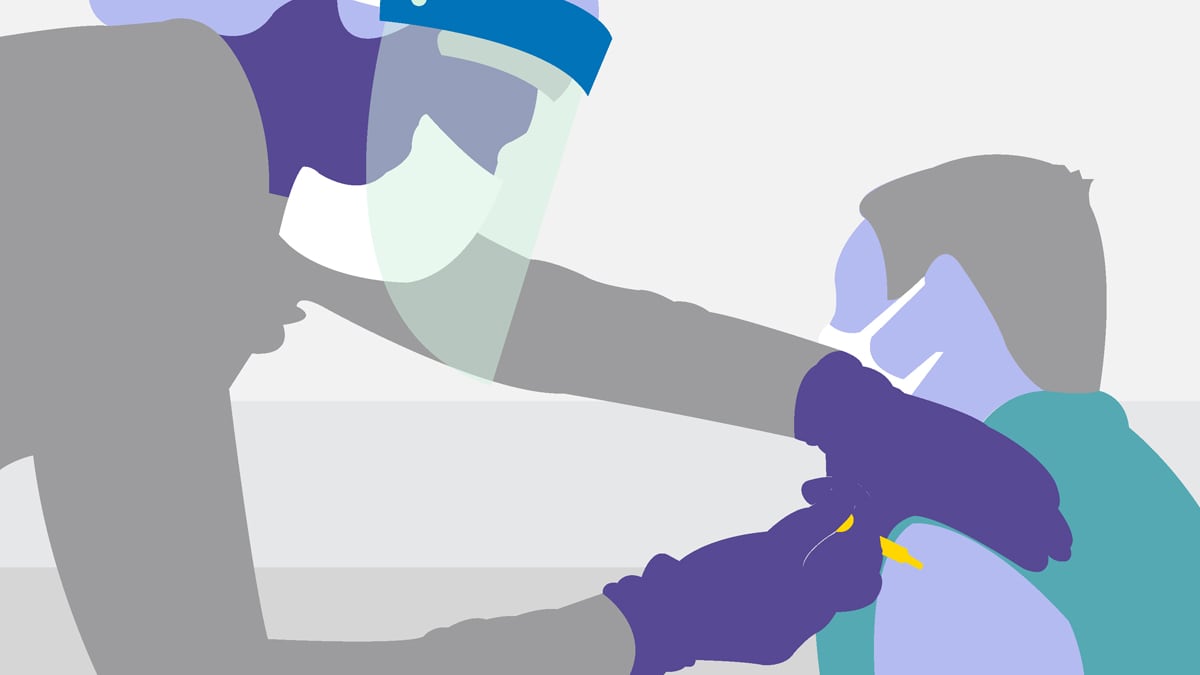On Tuesday mornings, the “pizza boxes” arrive.
That’s the name pharmacists have given to the flat, square boxes—each one 9 inches across, gleaming a light bluish purple—that contain something Portlanders want even more than a slice of sausage and Mama Lil’s pie from Apizza Scholls. In fact, the boxes contain what’s arguably the most valuable substance on earth right now: COVID-19 vaccine doses.
As Oregonians march through the Oregon Convention Center for shots five days a week, the doses are making their own journey.
Related: Oregon’s largest vaccination site is a logistical masterpiece. We take you inside.
The weekly rhythm starts on Thursdays, when the Oregon Health Authority notifies vaccination operations across the state how many doses to expect. For the Convention Center, doses of Pfizer arrive by FedEx Air through Portland International Airport. On Tuesday mornings, they’re driven to an offsite location.
That location is a closely guarded secret.
“Somebody may come and damage the supply—I think that’s probably one of the biggest concerns,” says Majid Tanas, head pharmacist at Legacy Health. “I think the second one is—I forget where it was—a van ran the National Guard off the road, trying to get the vaccine.”
Five pizza boxes, each holding 195 vials of vaccine, are stacked in a refrigerated delivery carton, wrapped in dry ice. With six doses to a vial, the carton holds enough doses for 5,850 people.
The pizza boxes immediately get put into an ultra-freezer, which keeps the doses at minus 70 degrees Celsius, a temperature comparable to Antarctica in winter. (By comparison, the lowest temperature of an average kitchen freezer is minus 5 degrees Celsius.)
Tanas says All4Oregon, the organizers of the OCC site, sought Pfizer vaccines in part because Portland hospitals had the freezer capacity for such cold storage. OCC, which started by administering both Pfizer and Moderna shots, now solely offers Pfizer first doses. That simplifies scheduling first and second doses.
It takes several hours to unpack all the boxes. After putting the pizza boxes in the super-freezer, the next step is checking the GPS tracker and a temperature monitor to ensure the doses have stayed cold for the whole journey. (Only once have they had to check with the manufacturer based on an anomaly, says Tanas.)
The vials come with the hypodermic needles and syringes required to shoot them into arms. Pharmacists print out stickers that go on the vials to indicate the lot number.
The day before the vaccines are given, the doses move from deep freeze into a refrigerator. (Pfizer vaccine can last five days at refrigerator temperatures.) They’re packed in refrigerated bags holding 10 vials each and driven to the Convention Center.
At the OCC, behind thick blue curtains, operates a makeshift pharmacy, where the Pfizer doses are prepped. Moderna’s vaccine comes ready to shoot, but Pfizer’s requires mixing with saline. The saline gets drawn into syringes which a pharmacist double-checks, making sure the right quantity will go in. Then the saline is added to vials and mixed by turning them over.
Nurses and techs draw doses into syringes before delivering them to vaccine stations. Each vaccine syringe has a deadline—a “use by” time, like on a can of tuna fish, but just a few hours after it’s prepped.
The doses are handled with extraordinary care, so the clinic’s had to throw out only around 800 (roughly 0.2%). There are three reasons that happens: A needle is too dull to go into an arm due to a manufacturing defect; a sixth full dose can’t be drawn out of a vial; or some kind of impurity is found in the dose. (That last problem has yet to occur at OCC, Tanas says.)
One sign of how much attention to detail pharmacists pay: Sometimes the Convention Center finishes a vaccine lot in the middle of the day. When that happens, the safety protocol calls for a pause in vaccinations so stickers marking that lot can be removed from stations and replaced with stickers signaling a new lot.
So if you find yourself with an unexpected delay at the Convention Center, Tanas says that’s one possible reason: “We go and collect all the extra stickers.”

